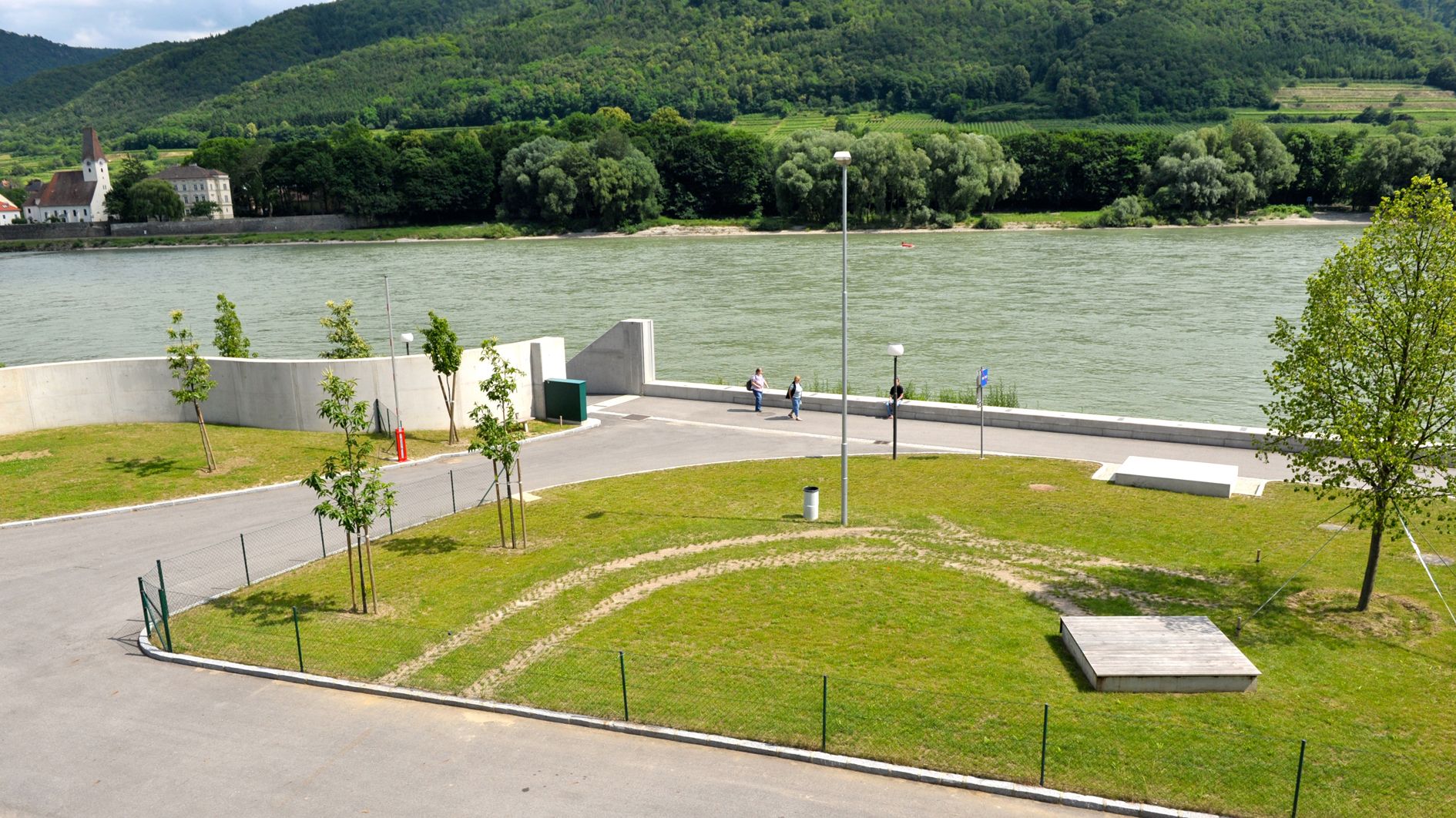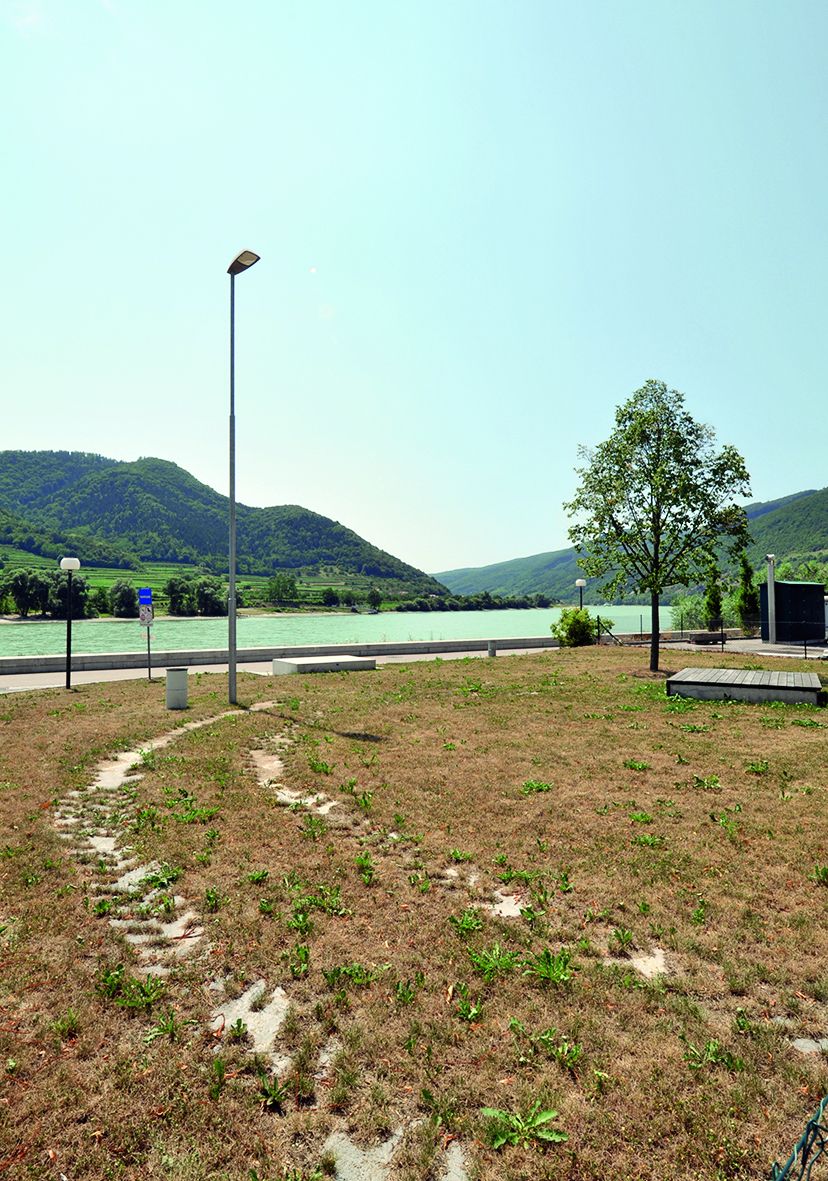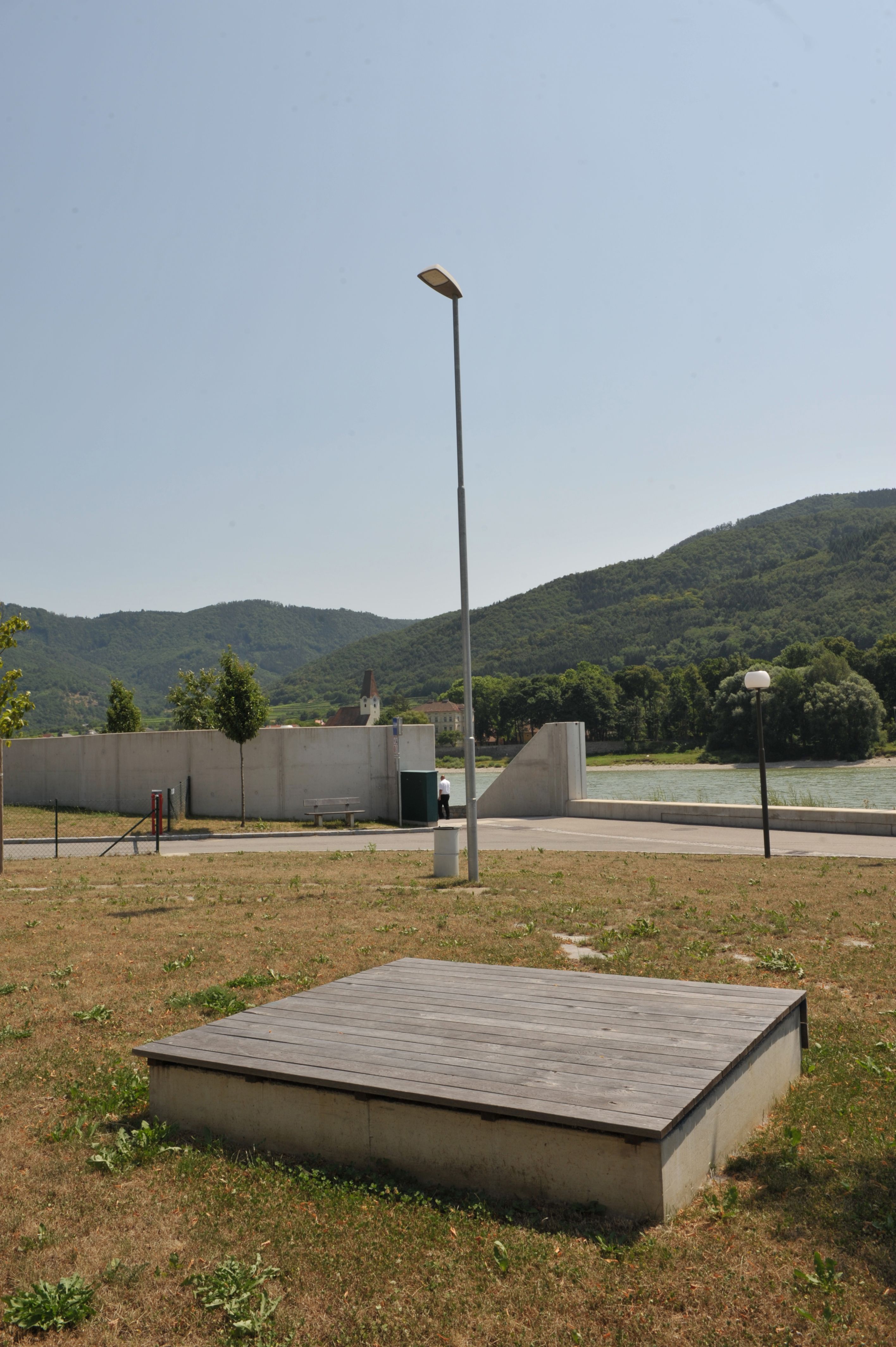Anita Leisz
:
HWS-Wiese (Flood Protection Meadow)
Back
Information
When Spitz an der Donau was hit hard by the so-called “flood of the century” in July 2002, people began working on establishing reliable protection against flooding. Then in June 2013, when the next “flood of the century” struck, the new operational system of protection was successfully put to the test. The area where the HWS-Wiese is now also meets these new standards. The patch of green is located next to the large flood protection building (with 1,200 square meters of floor space), its paved parking lot and access from the paved foot and bike path along the Danube. In case of a flood, the mobile elements stored in the building have to be deployed quickly.
This situation is the basis for Leisz’s work, and she approached the site and its situation gradually over time. She observed what processes occur there, and she talked to local inhabitants, visitors, and the bus driver who takes his daily break next to the flood protection building. Over the course of several months, Leisz measured the area and considered different options for its use. Through the objects chosen and their materiality, Leisz points directly to the situation at the site, referring to the local traffic circle (street lamp), the swimming pool (block covered by wooden boards), and to the passers-by strolling along the Danube, looking for a garbage can, a shady spot, or merely a quiet place to rest. The concrete blocks are not only placed in relation to one another; in terms of material and height, they also directly allude to the stationary flood protection walls as well as the bases for the mobile flood protection elements along the Danube. Two chestnut trees were left where they are, and a linden tree was planted to provide additional shade.
Leisz’s weather-proof garbage cans and wind-protected bench also fit with the practical context, but with decisive differences in the objects’ details, materiality, color, production and arrangement. For example, the bench is a standard model, but it is not as wide as usual. The gray garbage cans are constructed out of enamel, the final form being the result of several series of tests by the Riess company. The tractor tracks were cast in concrete then covered with soil. One of the garbage cans is placed under the street light, as if illuminated by it. However, if we look closer, or better yet, when we use these objects – for example, if we sit down on the bench or toss something in the garbage can – it becomes apparent that they are different from their surroundings, and their meticulous workmanship and materiality catches our eye. The garbage cans are ultimately revealed to be sculptures with a function. While each element is autonomous and exposed, it also relates to the other elements and to its environment. In this regard, this work shares much in common with other works by the artist. Leisz’s sculptures are autonomous and self-referential, but also extremely relational and referential at the same time. They refer to something beyond themselves: to the surrounding space and the industrial world, or to handicraft. They hint at functional contexts or narratives, and they anticipate their own reception. References to everyday culture can be found in the materials used and the titles. Leisz’s works do not refer to an abstract environment, but to a space and its specific connotations. This is also the case in Spitz an der Donau. The situation at the site becomes the starting point for the artist to create a place that invites us to explore what is familiar and what is unfamiliar.
Barbara Steiner






